Last Friday, we went out with some friends to see the ruins at Pompeii. We drove out first thing in the morning and met up with Giancarlo, a local archaeologist who gives tours of a few different sites in the area.
Pompeii is up on a hill, which makes sense given that ancient people tended to build towns on high ground for security. It has some of its outer wall still intact, but the city had been enjoying Pax Romana for so long by A.D. 79 that people used the walls not for defense but for building multiple levels of houses on the outer wall to take advantage of the great views.
You seldom see pictures of Pompeii from the outside, so it’s pretty impressive to see just walking up to it. 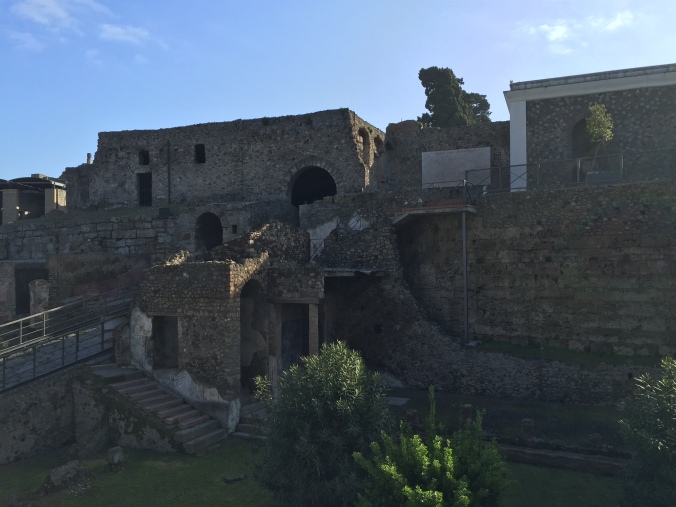
The outside of one entrance to the ruins.
Most of the pictures I (David) had seen of the place ahead of time either of the forum (the open village square) or looking directly down a street. Those pictures gave me the impression that Pompeii is largely open feeling thanks to Mount Vesuvius having knocked over most of the structures.
An ancient archway framing a view of Mount Vesuvius.
The first place the tour guide took us was the field where gladiators trained, so the prior impression I had was initially correct.
In fact, the city doesn’t feel open at all except for that training field, the forum, and the intersection of the two largest roads.
The field where gladiators trained. It used to have a covered walkway around all of it, but the field was always open to the sky.
While no roofs still stand and nearly all walls have crumbled to some extent, it does feel closed in like a city. Buildings come right up to the sidewalks, and there isn’t really space between them.
It doesn’t take too much imagination to feel what life might have been like as there’s more of the city left standing than you might think.
Rather than looking down a street, this is the view from the street. You can see an arch in the back where an oven was. The regular holes in the back wall were for wooden support beams for the second floor, which housed slaves.
It was a great choice to hire a tour guide because so much of the nuance would have been lost. You can notice some things a guide would point out, but our guide was able to explain why all those things existed.
For example, the walls have obviously different construction methods interspersed because the Pompeiians rebuilt old walls damaged by earthquakes with the current era’s methods and materials.
There are two differently sized theaters because one was used for theater (large space to accommodate sets, multiple actors, costume changes, etc) and another was used for musical performance (a smaller space helps the sound to project better; it also had what modern day musicians would refer to as a ‘pit’).
This was the larger theater, used for drama. Only the white seats, which are marble, are original. The rest are modern reconstructions. You’ll notice the entryways get smaller as each level gets higher- the rich would enter the biggest door and sit on the lower seats while the lowest class would enter at the highest point through the smallest doors.
Not all of the buildings on the sidewalk would have been businesses. The building fronts with grooves in the ground for sliding doors were the businesses, while the buildings without grooves were homes. Each home had a main entrance with a large door for the family, but the house’s slaves would have to enter a smaller entrance.
This was a Pompeiian fast food joint. The pots would’ve contained food, and the shelves on the left would’ve had wine.
The place is fascinating, but it’s not without its downer aspects. The plaster casts of the bodies of people who died in the eruption are a reminder of the horrific event that allow us to tour the city in the first place.
Slavery was also fully integrated into Roman society. I can barely think of a thing that Giancarlo pointed out that didn’t involve mentioning slaves to some degree, and he told us that slaves were truly thought of as property (sometimes disposable property) and not as people. Some slaves were forced into being prostitutes, purchased by the richer families and made to perform in certain ways depending on what the local clientele desired. Some ‘merchants’ purchased their prostitutes from lands a far distance from Italy so they could advertise their goods as ‘exotic’ and therefore more appealing. For as advanced as the Romans were, they were unbearably brutal on a large number of people.
One of the 40+ brothels found (so far) in Pompeii. The marble sign is from a mapping system created by archaeologists in the 1800s to better keep track of the ruins. Richer clients would use the larger rooms on the second floor while the budget shopper would simply occupy a stall on the first floor.
The stone streets sloped downwards and were used (along with a steady stream of water) to carry waste away from the city. Large cobblestones were used as “crosswalks” so one could cross the road without stepping in the filthy water. You can also see large grooves in the stone carved out by the wheels of the chariots that traversed the city.
We plan on going back to just wander and look at the details, as well as see a few things like the amphitheater we didn’t get to this time. We also want to go to Herculaneum, a city that Vesuvius destroyed with mudslides rather than ash and pumice. It’s smaller, but it’s also better preserved. The mud kept out oxygen, which means that unlike at Pompeii, organic material didn’t decompose. Plus, the mud is tougher to dig through than the ash. That fact kept the area-ruling Spanish in the 1700s and the museum-building Neapolitans in the 1800s from pillaging many of the artifacts.
A house in Pompeii once had the famous mosaic of Alexander the Great, but this is a copy installed in 2005. The original is in a museum in Naples.
We’re fortunate to live so close to the ruins to be able to explore them multiple times over our years here in Naples. There aren’t many places you can go to see city-sized areas that old outside of places like Egypt and some remote locales in Central America and Asia.
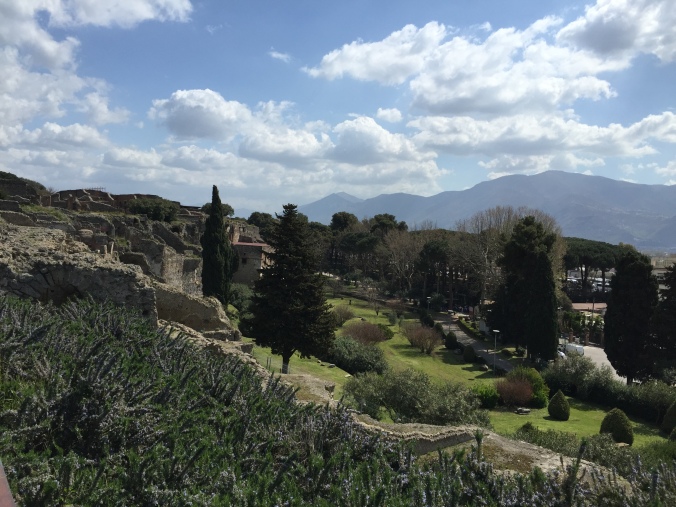
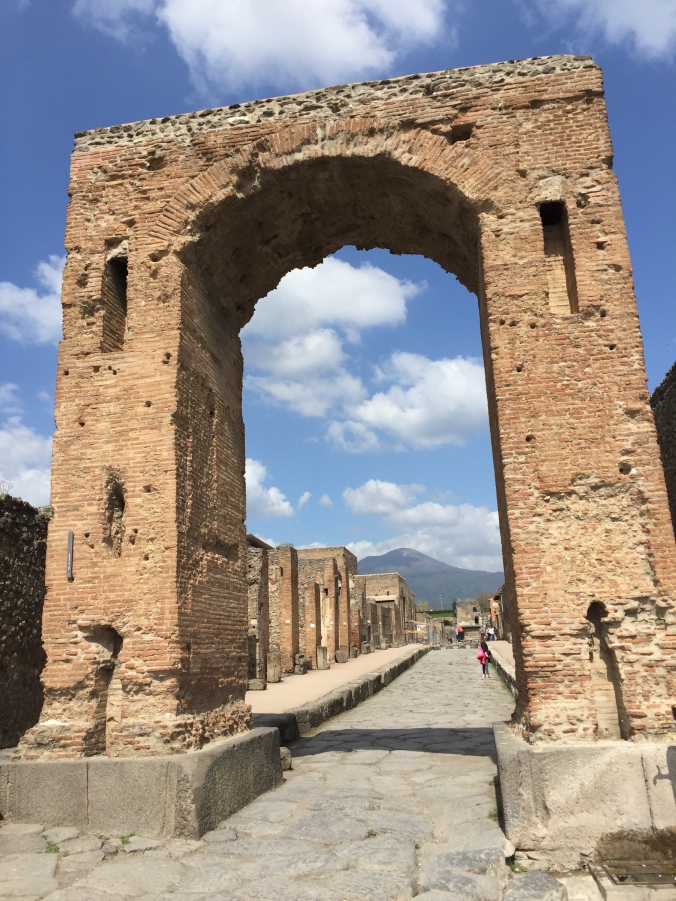
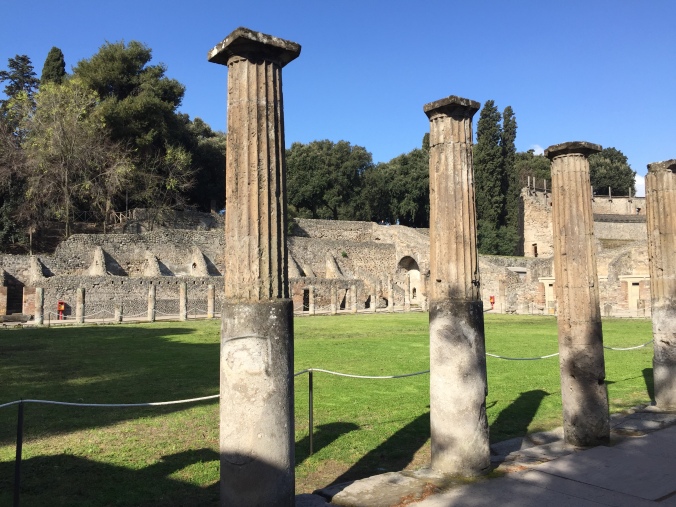
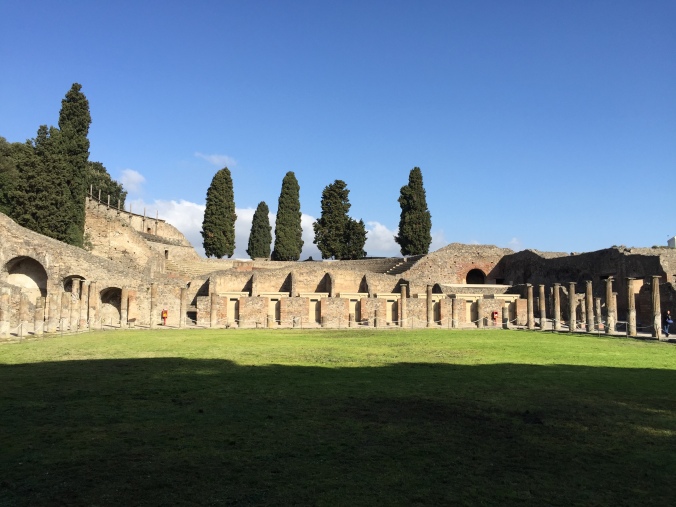
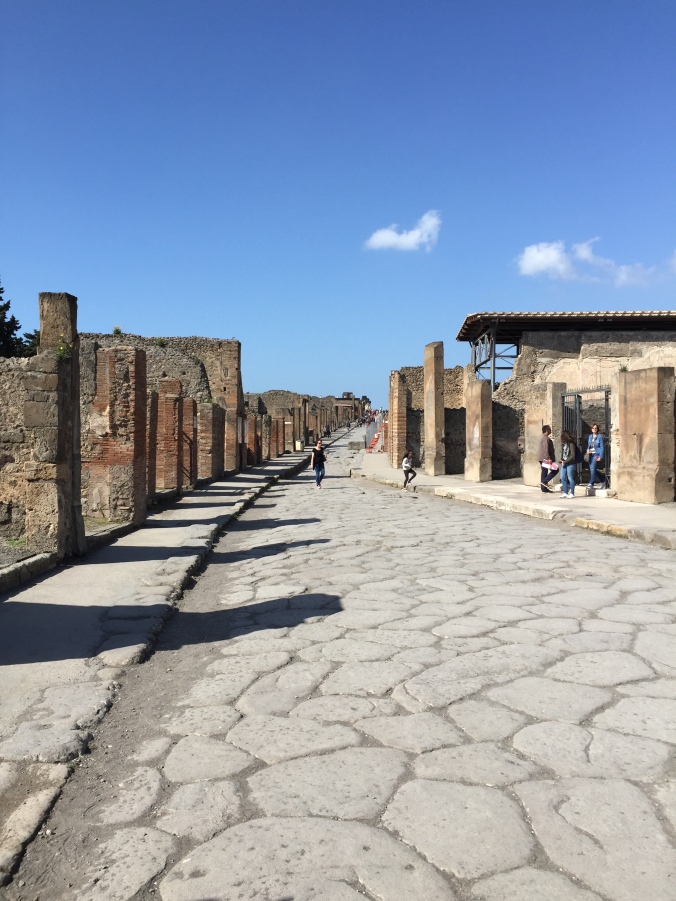
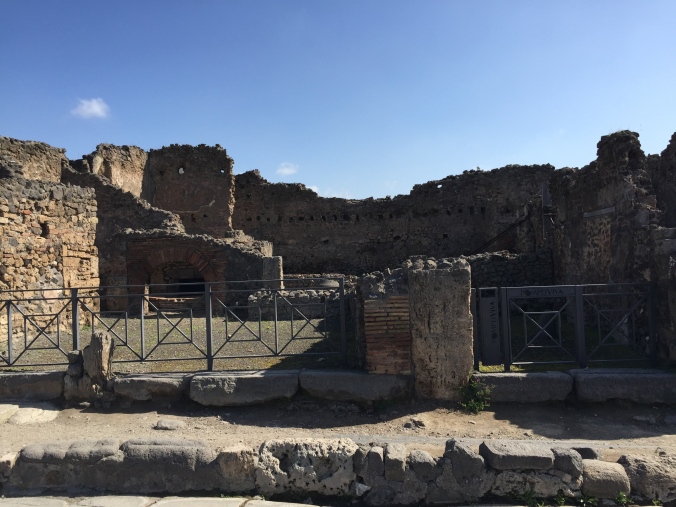
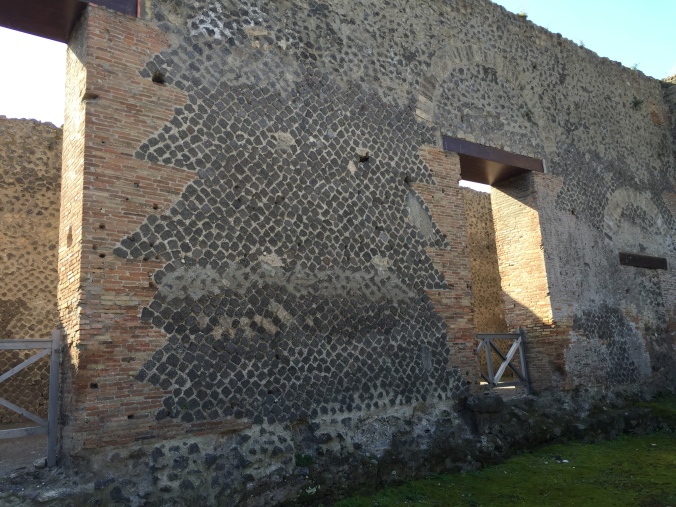
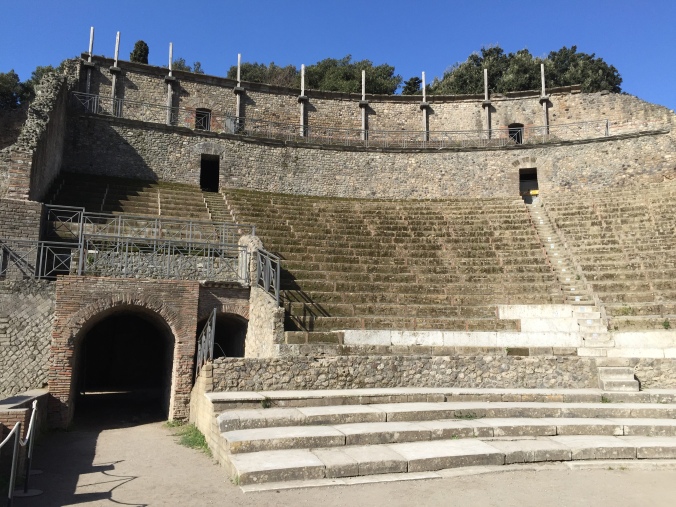
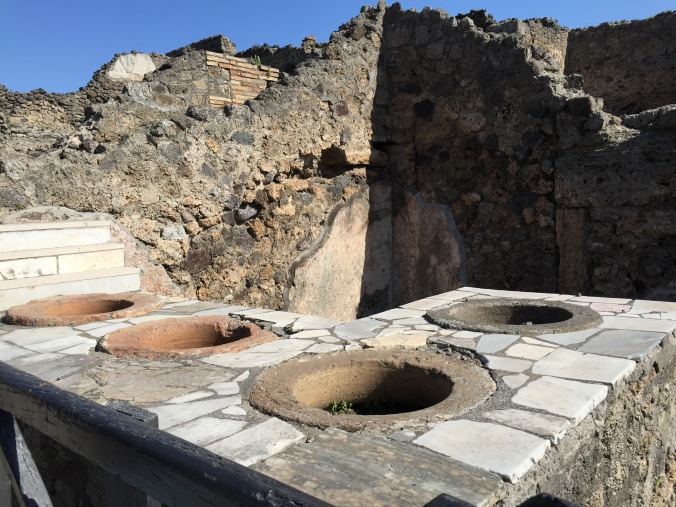
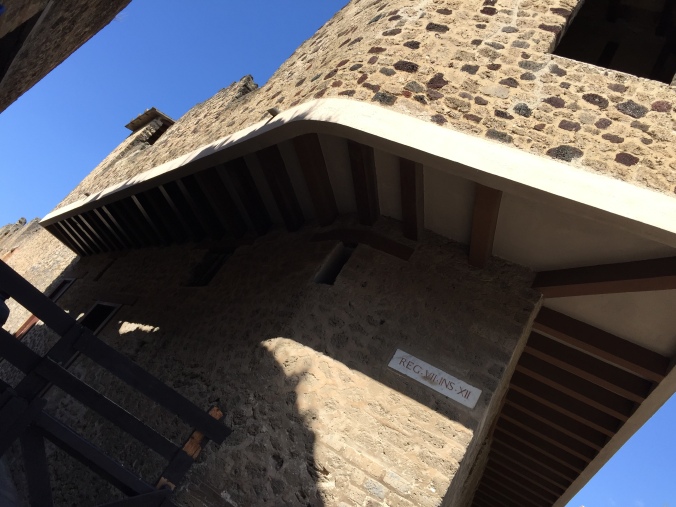
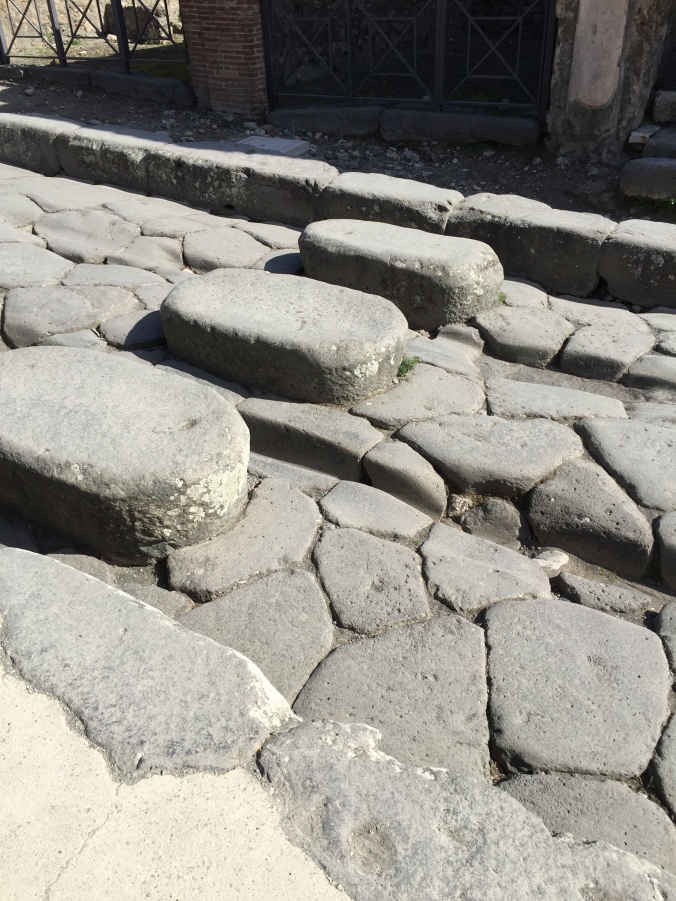
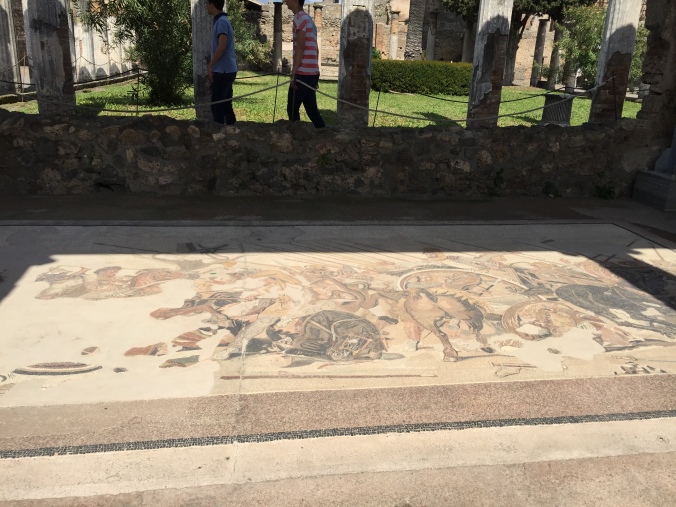
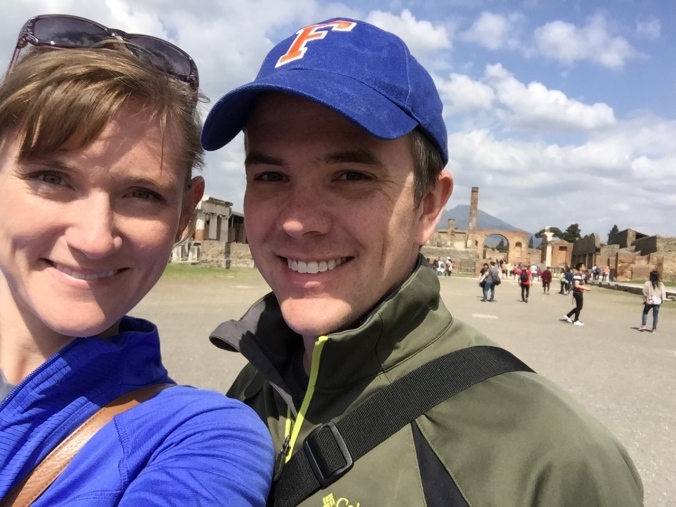
Oh do I want to come for a visit. Maybe 2016 you are on my list. What a wonderful experience for you both.
Just let us know when your flight arrives and we’ll have a bed made up!!
I love this post!